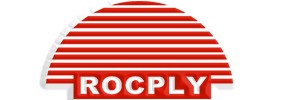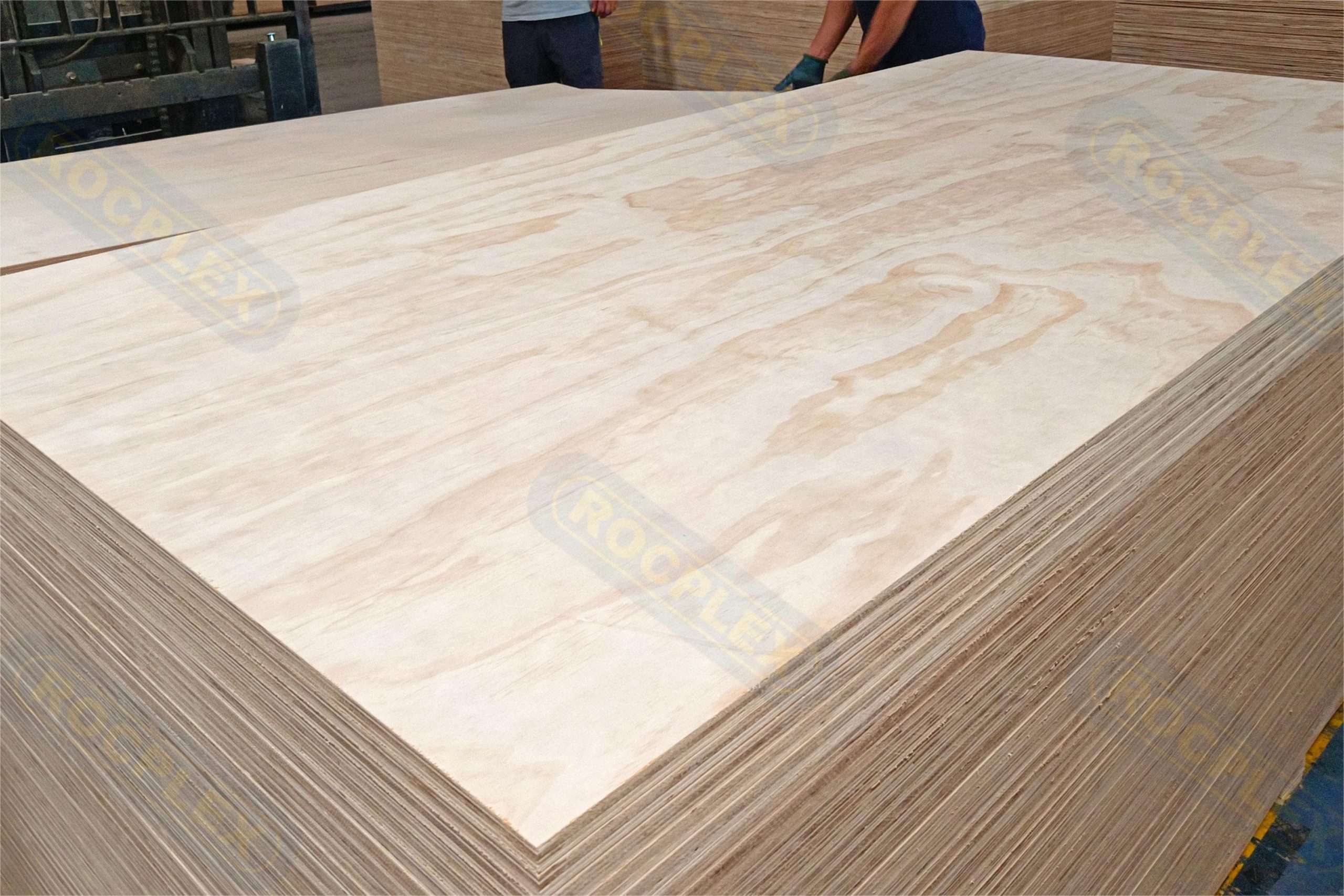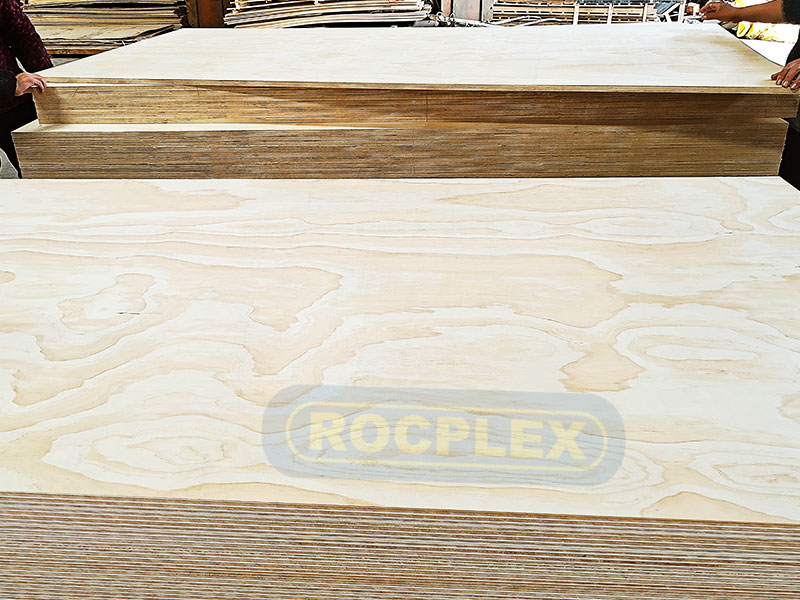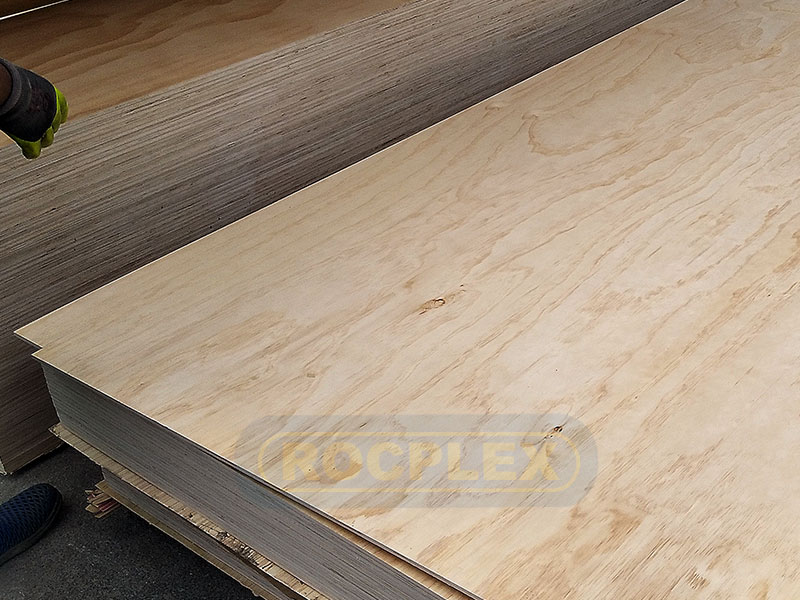What is Plywood Board?
A plywood board is a type of engineered wood made from thin layers, or “plies,” of wood veneer glued together. Each layer’s grain is rotated up to 90 degrees to one another, enhancing strength and reducing the risk of splitting. Plywood boards are available in various types, including veneer plywood, structural plywood, laminated panels, and hardwood plywood, each offering unique characteristics and benefits. Plywood suppliers provide these boards in multiple grades and finishes, catering to diverse construction and design needs.
Plywood boards are known for their versatility and durability. They are used in a wide range of applications, from building structures and furniture to crafting decorative items. Their ability to resist warping and cracking under different environmental conditions makes them a reliable choice for both indoor and outdoor projects. Plywood boards are also valued for their aesthetic appeal, with various finishes and veneers available to match different design styles.
Applications of Plywood Board
Construction Uses
Plywood boards play a critical role in construction. They are commonly used for subflooring, wall sheathing, and roofing due to their strength and stability. Structural plywood is specifically designed to bear heavy loads, making it ideal for these applications.
Subflooring and Wall Sheathing
In subflooring, plywood boards provide a stable base for various floor coverings, ensuring even support and durability. Wall sheathing with plywood boards enhances the structural integrity of buildings, providing a solid foundation for insulation and exterior finishes.
Furniture and Cabinetry
Plywood boards are a popular choice in furniture making and cabinetry. Hardwood plywood, in particular, is prized for its strength and attractive appearance. Its smooth surface is perfect for applying finishes, making it ideal for creating high-quality furniture and cabinets.
Custom Furniture
Plywood boards can be used to create custom furniture pieces, such as tables, chairs, and shelves. Their versatility allows for unique designs, and their strength ensures that the furniture will be durable and long-lasting.
Decorative Applications
In addition to structural uses, plywood boards are also employed in decorative applications. Veneer plywood and laminated panels are often used for wall panels, ceilings, and other interior design elements, adding a touch of elegance and sophistication to spaces.
Wall Panels and Ceilings
Veneer plywood offers a smooth and attractive surface, making it suitable for wall panels and ceilings. These applications enhance the aesthetic appeal of interiors while providing practical benefits like sound insulation and fire resistance.
DIY Projects
For DIY enthusiasts, plywood boards are a go-to material. They are easy to cut, shape, and finish, making them perfect for a variety of home improvement projects. From building shelves to crafting home decor items, plywood boards offer endless possibilities.
Home Decor Items
Plywood boards can be used to create custom home decor items such as picture frames, mirrors, and decorative panels. Their versatility and ease of use make them ideal for DIY projects that require both creativity and functionality.
Benefits of Plywood Boards
Strength and Durability
Plywood boards are renowned for their strength and durability. The cross-graining process enhances their load-bearing capacity, making them suitable for both structural and decorative applications.
Resistance to Warping
One of the key advantages of plywood boards is their resistance to warping and cracking. This stability makes them a reliable choice for areas exposed to varying environmental conditions, such as kitchens and bathrooms.
Versatility
The versatility of plywood boards is unmatched. They can be used in a wide range of applications, from construction and furniture making to decorative projects. This adaptability makes them a favorite among builders, designers, and DIY enthusiasts.
Customization Options
Plywood boards offer numerous customization options. They can be stained, painted, or laminated to match different design aesthetics. This flexibility allows for personalized and unique creations.
Cost-Effective
Plywood boards provide a cost-effective solution without sacrificing quality. Compared to solid wood, they offer similar benefits at a lower price point. This affordability extends to both material and labor costs, making them an attractive option for various projects.
Easy Installation
The lightweight nature of plywood boards makes them easy to handle and install. Whether for professional construction projects or DIY tasks, plywood boards simplify the installation process, saving time and effort.
Sustainable Choice
Many plywood suppliers are committed to sustainable practices, ensuring that their products are sourced from responsibly managed forests. This makes plywood boards an environmentally friendly option for eco-conscious consumers.
Eco-Friendly Manufacturing
The manufacturing process for plywood boards has evolved to minimize environmental impact. Modern techniques reduce waste and energy consumption, contributing to the overall sustainability of plywood products.
Innovations in Plywood Boards
Advanced Manufacturing Techniques
Innovations in manufacturing have improved the quality and performance of plywood boards. Advanced techniques, such as precise veneer cutting and eco-friendly adhesives, have resulted in stronger and more durable products.
Improved Adhesives
The development of eco-friendly adhesives has reduced the emission of harmful chemicals, making plywood boards safer for indoor use. These adhesives also enhance the bond between veneers, increasing the overall strength of the boards.
Enhanced Veneer Quality
The quality of veneers used in plywood boards has improved significantly. Better veneer quality means fewer defects and a more consistent appearance, which is important for both structural and decorative applications.
Sustainable Practices
Sustainability is a key focus in the plywood industry. Innovations aimed at reducing environmental impact, such as using recycled materials and improving energy efficiency, are helping to make plywood boards even more eco-friendly.
Recycling and Waste Reduction
Many plywood manufacturers have implemented recycling programs and waste reduction strategies. These practices not only minimize environmental impact but also contribute to the overall efficiency of the production process.
The Role of Plywood Suppliers
Quality Assurance
Reputable plywood suppliers ensure that their products meet stringent quality standards. This includes sourcing high-quality raw materials and employing advanced manufacturing processes to produce durable and reliable plywood boards.
Certification and Standards
Many plywood suppliers offer products that are certified by recognized organizations, ensuring that they meet specific environmental and quality standards. These certifications provide assurance to consumers and builders that they are using high-quality and sustainable materials.
Wide Range of Options
Plywood suppliers provide a wide range of options, including veneer plywood, structural plywood, laminated panels, and hardwood plywood. This variety ensures that customers can find the right type of plywood board for their specific needs.
Customization Services
Many suppliers offer customization services, allowing customers to order plywood boards in specific sizes, finishes, and treatments. This service is particularly beneficial for large projects that require uniformity and precise dimensions.
Expert Support
Experienced plywood suppliers offer valuable support and expertise. They can help customers choose the right type of plywood board for their projects, ensuring that the material used is fit for purpose and enhances the overall success of the construction or DIY endeavor.
Innovation and Collaboration
Leading plywood suppliers collaborate with designers and architects to develop new products and solutions. This collaboration fosters innovation and results in cutting-edge designs and applications for plywood boards.
Trends and Innovations in Plywood Design
Modern Design Trends
Modern design trends have embraced plywood boards for their clean lines and natural appeal. Designers are experimenting with different patterns, finishes, and installation techniques to create unique and visually striking interiors.
Creative Patterns
Creative patterns such as herringbone, chevron, and geometric designs are becoming popular in plywood board applications. These patterns add visual interest and can be achieved through various installation methods and finishes.
Acoustic Solutions
Plywood boards can be designed to improve acoustics in a space. Sound-absorbing panels or specific installation techniques can reduce noise levels and enhance sound quality, making plywood boards ideal for music studios, conference rooms, and theaters.
Integrated Lighting
Integrating lighting into plywood boards is a popular design trend. Recessed lighting, LED strips, and pendant lights can be seamlessly incorporated into the design, providing both functionality and aesthetic benefits.
Sustainable Innovations
Sustainability continues to drive innovation in plywood board design. New treatments and finishes are being developed to further reduce environmental impact. Advances in manufacturing processes are making it possible to produce high-quality plywood with lower resource consumption.
Eco-Friendly Finishes
Eco-friendly finishes enhance the durability and appearance of plywood boards while minimizing environmental impact. These finishes ensure that plywood boards remain a sustainable choice for interior design.
Case Studies: Successful Plywood Board Projects
Residential Transformations
Plywood boards have been successfully used in numerous residential projects, transforming living spaces with their natural beauty and practicality. These case studies highlight how plywood can enhance both the aesthetic appeal and functionality of homes.
Commercial Success Stories
In commercial settings, plywood boards have been used to create stylish and welcoming environments. Retail spaces, offices, and restaurants have all benefited from the aesthetic and practical advantages of plywood boards.
Public Building Innovations
Public buildings such as schools, libraries, and community centers have also embraced plywood boards. Their durability and low maintenance requirements make them an ideal choice for these high-traffic environments.
Design Excellence
Innovative designs using plywood boards have received recognition for their excellence. Architects and designers have been praised for their creative use of plywood, resulting in unique and visually stunning interiors.
Future of Plywood Board
Increasing Demand
The demand for plywood boards is expected to continue growing as more industries recognize their benefits. Their versatility, cost-effectiveness, and aesthetic appeal make them an attractive option for both commercial and residential projects.
Expanding Applications
As the construction and design industries evolve, plywood boards will find even more applications. New technologies and design trends will likely expand their use beyond traditional applications, incorporating them into innovative and creative projects.
Technological Advancements
Technological advancements will further enhance the quality and performance of plywood boards. Innovations in manufacturing processes, adhesive technologies, and veneer treatments will result in stronger and more durable products.
Smart Manufacturing
Smart manufacturing techniques, including automation and precision cutting, will improve the efficiency and quality of plywood production. These advancements will enable manufacturers to produce high-quality plywood boards more quickly and with less waste.
Sustainable Practices
Sustainability will remain a key focus in the plywood industry. Continued efforts to reduce environmental impact, such as using recycled materials and improving energy efficiency in production, will make plywood boards an even more sustainable choice.
Eco-Friendly Innovations
Ongoing research and development will lead to eco-friendly innovations in plywood production. These innovations will further reduce the environmental footprint of plywood boards and promote sustainable building practices.
Design Innovations
Design innovations will continue to push the boundaries of what is possible with plywood boards. Creative patterns, integrated lighting, and acoustic solutions will become more prevalent, offering new and exciting possibilities for interior design.
Customization and Personalization
Advances in digital design and manufacturing will allow for greater customization and personalization of plywood boards. Customers will be able to order plywood tailored to their specific needs and preferences, resulting in unique and bespoke design solutions.
FAQs: Understanding Plywood Boards
What are plywood boards used for?
Plywood boards are used in various applications, including construction, furniture making, and decorative projects. They are commonly used for subflooring, wall sheathing, roofing, custom furniture, and home decor items.
Is plywood board waterproof?
While standard plywood boards are not waterproof, there are waterproof variants available, such as marine plywood. Waterproof plywood is treated to resist moisture, making it suitable for use in wet or humid environments.
What are 3 advantages of Plywood Board?
Three advantages of plywood are its strength, versatility, and cost-effectiveness. Plywood’s cross-graining process enhances its strength and stability, making it suitable for various applications. Its versatility allows it to be used in construction, furniture making, and decorative projects. Additionally, plywood is a cost-effective alternative to solid wood, providing similar benefits at a lower price.
Is plywood board strong?
Yes, plywood boards are known for their strength and durability. The cross-graining process used in their production enhances their load-bearing capacity and resistance to warping, making them suitable for both structural and decorative applications.
Which is cheaper, plywood or plyboard?
Plywood is generally more affordable than plyboard (also known as blockboard). While both materials have their uses, plywood is typically less expensive and offers greater versatility and strength for a wide range of applications.
Case Studies: Successful Plywood Board Projects
Residential Transformations
Plywood boards have transformed numerous residential spaces, adding both beauty and functionality. These case studies highlight how plywood has been used to enhance living rooms, kitchens, bedrooms, and other areas of the home.
Living Rooms
In living rooms, plywood boards have been used for wall panels, ceilings, and custom furniture. Their natural wood grain adds warmth and character, creating a cozy and inviting atmosphere.
Kitchens
In kitchens, plywood boards are used for cabinetry, countertops, and backsplashes. Their durability and resistance to moisture make them ideal for this high-traffic area, while their aesthetic appeal enhances the overall design.
Plywood Board Commercial Success Stories
Commercial spaces such as offices, retail stores, and restaurants have benefited from the use of plywood boards. These projects demonstrate the versatility and practicality of plywood in creating stylish and functional environments.
Offices
Plywood boards are used in offices for partitions, wall panels, and custom furniture. Their strength and durability ensure long-lasting performance, while their natural appearance contributes to a professional and welcoming atmosphere.
Retail Stores
In retail stores, plywood boards are used for shelving, displays, and fixtures. Their versatility allows for creative and eye-catching designs that enhance the shopping experience.
Plywood Board Public Building Innovations
Public buildings such as schools, libraries, and community centers have also embraced plywood boards. Their durability and low maintenance requirements make them ideal for high-traffic areas, while their aesthetic appeal enhances the overall design.
Schools
In schools, plywood boards are used for desks, storage units, and wall panels. Their strength and durability ensure they can withstand heavy use, while their natural appearance creates a warm and inviting learning environment.
Libraries
Libraries use plywood boards for shelving, furniture, and acoustic panels. Their versatility allows for creative design solutions that enhance both functionality and aesthetics.
Design Excellence
Innovative designs using plywood boards have received recognition for their excellence. Architects and designers have been praised for their creative use of plywood, resulting in unique and visually stunning interiors.
Award-Winning Projects
Several award-winning projects have showcased the potential of plywood boards in creating innovative and sustainable designs. These projects serve as inspiration for future uses of plywood in interior design and architecture.
Plywood Board is Versatile and Durable Choice
Plywood boards offer a blend of strength, versatility, and cost-effectiveness, making them an ideal choice for a wide range of applications. From construction and furniture making to decorative projects, plywood boards provide both practical and aesthetic benefits. As plywood suppliers continue to innovate and prioritize sustainability, the future of plywood boards looks promising, with new possibilities and advancements on the horizon.
Post time: Jun-15-2024




